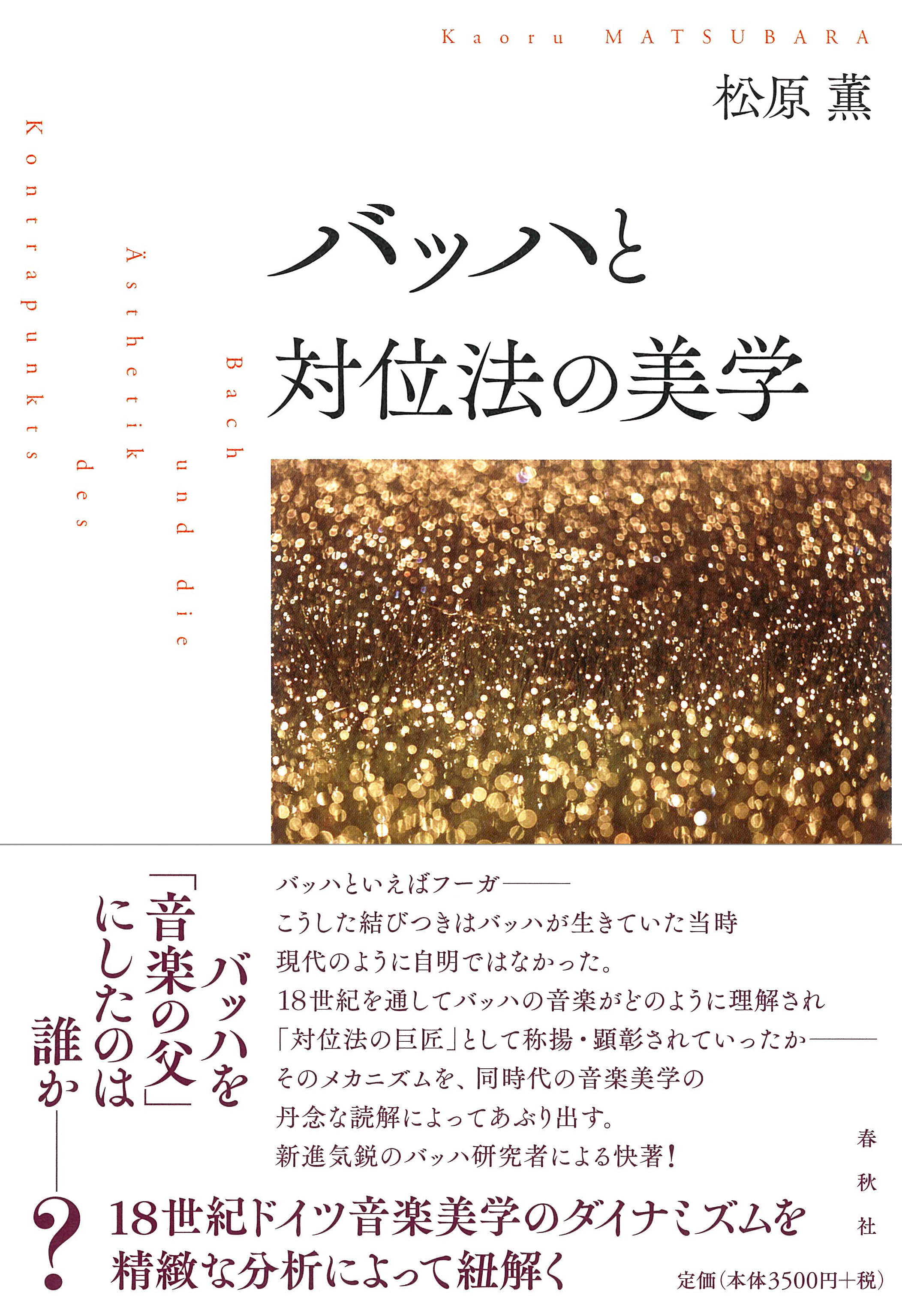
Title
Bach to Taii-ho no Bigaku (Bach and the Aesthetics of Counterpoint)
Size
376 pages, 127x188mm
Language
Japanese
Released
January 23, 2020
ISBN
9784393932179
Published by
Shunpusha Publishing Company
Book Info
See Book Availability at Library
Japanese Page
Whether one is a classical music fan or not, most people have undoubtedly heard works such as The Art of Fugue, the Musical Offering, and The Well-Tempered Clavier by Johann Sebastian Bach (1685-1750), which skillfully incorporate the musical techniques of the fugue and the canon. Bach is often equated with “counterpoint.” While this is accepted as common knowledge today, anyone who has read a biography of J.S. Bach would know that, from early on (even before Bach’s lifetime), this counterpoint was criticized for being old-fashioned.
So, when and how was this image of J.S. Bach as the “master of counterpoint,” which has continued to exist up to the present, formed? The truth is, the process by which this image came to be associated with Bach has not been sufficiently investigated up to now. The presumption that the Bach’s counterpoint is exquisite and, therefore, naturally deserving of high praise has likely kept researchers from posing this question.
It is for this reason that this book delves into this question. What the investigation reveals is that views about counterpoint changed continuously throughout the 18th century while reflecting the musical aesthetics of the time. In the beginning, counterpoint was seen as a basic principle of musical composition. However, around the mid-18th century, the mathematical and gothic nature of counterpoint began to be criticized as not fitting with the taste of the time. That said, as counterpoint began to be used less frequently in actual music, contrary to the former criticism, counterpoint came to be seen affirmatively as an archaic technique for musical composition that transcends time. It was the interaction between this “dramatic reversal of the image of counterpoint” and the “canonization of Bach’s compositional methods” by Bach’s students that led to the establishment of the reputation of Bach as the “master of counterpoint” by the turn of the 19th century.
Each chapter of the book focuses on a single musician with some connection to J.S. Bach and examines how these musicians viewed counterpoint and Bach’s music based on materials that they penned. Unlike Bach who dedicated his life to musical composition and performance, these musicians also actively engaged in discussions about music theory and criticism. Their discourse has not been sufficiently presented and researched due, in part, to the fact that, although numerous books on German musical aesthetics from the 18th century exist, they are difficult to read because they were printed using Fraktur typeface. It is my greatest hope that this book, which takes up the works of many of these relatively unknown authors and translates them into Japanese, stimulates interest in “music,” “Germany,” and the “18th century,” and will serve as a foothold for further research.
The reader may be surprised at the wide range of topics coloring the cultural history of the 18th century that emerge over the course of the book, ranging from the conflict between sensus and ratio that has existed since Ancient Greece, the spread of the galant style (Rococo style), issues related to the independence of German music, the Sturm and Drang movement, and the musical aesthetics of romanticism. I invite the reader to explore these topics that, at first glance, seem to have nothing to do with Bach but are dynamically interwoven with “Bach and the aesthetics of counterpoint.”
(Written by: MATSUBARA Kaoru / March 16, 2021)



